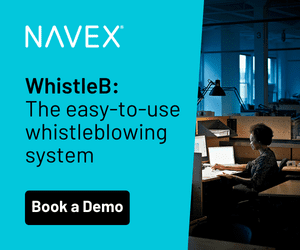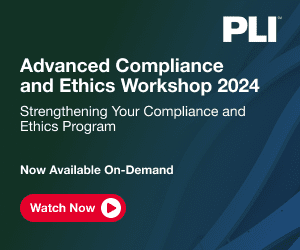As private equity increasingly targets accounting firms for their stable revenue models, firm leaders face critical decisions about strategic alignment, cultural impact and governance structures. Tom Koehler explores how the most successful PE-backed firms are maintaining their professional values while leveraging new resources to address talent shortages and modernize operations.
Two major forces are driving a significant transformation of the accounting profession in 2025: the rise of private equity (PE) investment and advancements in compliance technology. These trends are reshaping firm structures and dynamics, while also influencing competition, service delivery and long-term strategic planning.
Accounting firms that take advantage of PE investment and technology advancements can enhance their business model and improve their operations framework to build and manage substantial growth. With each change, opportunities and challenges will redefine long-term success.
PE’s role in reshaping accounting firms
Private equity investment and involvement has given accounting firms the financing and business counsel to help them focus on growth, whether organic expansion or strategic acquisition, as it enables and requires both service diversification and technology upgrades.
A key driver behind PE’s interest in the industry is the stable revenue model that makes accounting firms relatively safe investments. From 2020 to 2023, the Big Four’s total revenues increased from about $157 billion to over $200 billion, while the top 100 firms saw revenue growth of nearly 13% in 2023 — one of the highest rates in a decade.
To attract an investor, it’s essential to understand what else is driving PE interest. Beyond financial considerations, private equity often sees its role in helping accounting firms meet the industry challenges that can otherwise hinder growth. According to Allan Koltin, CEO of Koltin Consulting Group, three factors vital to growth that PE can support are:
- Talent: Firms are grappling with a shrinking talent pool and an aging workforce. Attracting and retaining skilled workers has become a competitive game among firms that must create new career opportunities that can compete with other professional services.
- Technology: Competitive pressures are pushing firms to modernize operations.
- Transformation: Increasing client expectations of firms to expand their service offerings.
Traditional accounting firms find it difficult to grow or to attract investors without prioritizing all three of those factors. Meanwhile, PE-backed firms have been able to make substantial investments in these areas, giving them a competitive edge and boosting both revenue and profits. EisnerAmper, Citrin Cooperman and Cherry Bekaert, for example, experienced notable revenue growth post-investment, with Cherry Bekaert nearly doubling revenue from $293 million to $585 million in 2023.
In 2024, global PE- and venture capital-backed deals in the accounting sector surpassed $6.3 billion. This PE-based momentum is expected to continue. The Financial Times projects that one-third of the 30 largest US firms may soon have PE backing.
Will Bank-Fintech Partnerships Face Continued Regulatory Scrutiny in 2025?
Cross-industry coalition emerges to define best practices for embedded finance
Read moreDetailsWeighing private equity investment
While private equity is a strategic partnership that can accelerate growth, enhance technological capabilities and address talent acquisition challenges, it also requires careful evaluation. Beyond financial considerations, firm leaders should consider the long-term implications of strategic alignment, cultural harmony, governance implications and eventual PE exit strategies. Each should be considered carefully to ensure a strong fit for a successful partnership.
- Strategic alignment: Does PE investment complement the firm’s current growth strategy, or will it force an uncomfortable shift? The influence of PE investment means your firm should be operationally ready for changes and that all key stakeholders have committed to the new vision.
- Cultural impact: Can firm values coexist with a metrics-driven PE approach? New forms of performance measurement often clash with traditional firm cultures. If everyone agrees to defined metrics in advance, they can help to create a laser focus.
- Governance models: How will PE ownership affect everything from compensation structures to promotion paths and decision-making? The firm needs to negotiate how they can maintain professional independence while satisfying investor expectations.
- Exit planning: With typical PE investment horizons of five to seven years, what long-term transition plans make sense? The plan might be to pursue a public offering, seek another PE investor or explore strategic acquisition. Each path carries distinct implications for partners and staff. Planning for those options before accepting the initial investment will help the firm with each operational decision.
Technology adoption
Historically viewed as a regulatory necessity, compliance is now an area that supports service delivery and risk management for faster, scalable business growth. AI-powered compliance systems reduce reliance on manual processes and email-based workflows by managing and leveraging massive data that accompanies firm growth, ever-increasing client expectations and expanded regulatory compliance.
Automation helps firms identify and resolve conflicts, conduct risk analyses and perform complex conflict searches across corporate trees in minutes. For PE-backed firms, where conflict scrutiny is heightened, modern compliance technology plays an even more essential role in maintaining and proving independence. In addition, investing in advanced compliance technology can demonstrate a firm’s commitment to meeting client expectations, which can increase client trust and return business.
While AI is reshaping industries, accounting firms are also charged with maintaining trust. Traditional quality and risk functions often operate as isolated or reactive processes. Today, this approach is no longer viable. Clients and regulators alike demand assurance that firms adhere to ethical standards. Embedding compliance and risk into operational workflows will ensure they are integral to decision-making, creating a proactive framework that safeguards both the firm and its clients. With this new approach, firms approach compliance as a continuous process, not an afterthought.
Navigating the future
At its core, the accounting profession exists to safeguard investor confidence by ensuring transparency, accuracy and integrity in financial reporting. I suggest adding a fourth T to Koltin’s well-known trio of talent, technology and transformation: trust. Trust is the foundation of the industry, and any transformation — whether through PE investment or operational modernization — must reinforce this principle. By embedding compliance and risk management into daily workflows, firms can establish a proactive framework that not only mitigates risk but also strengthens credibility and faster engagement onboarding.
This trust-centric approach enhances both quality and resilience, enabling firms to navigate complexity while delivering sustained value to clients, investors and stakeholders. Private equity investment and operational excellence are not merely financial strategies; they are complementary forces that, when balanced effectively, drive long-term competitive advantage and sustainable growth. Firms that effectively balance the opportunities inherent in both are well-positioned for sustained growth for years to come.




 Tom Koehler is global managing principal of accounting and consulting at Intapp, a software provider in the financial and professional services sector.
Tom Koehler is global managing principal of accounting and consulting at Intapp, a software provider in the financial and professional services sector. 








